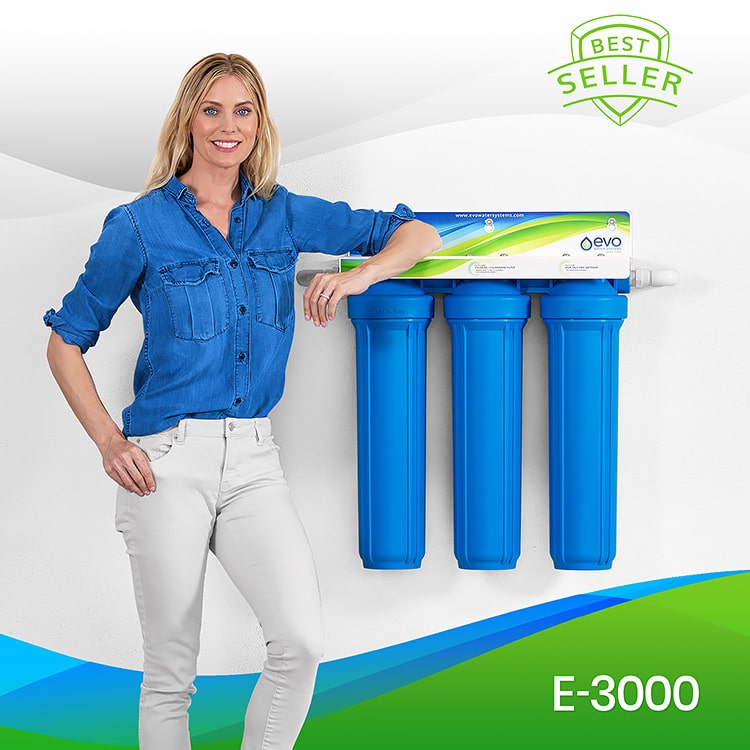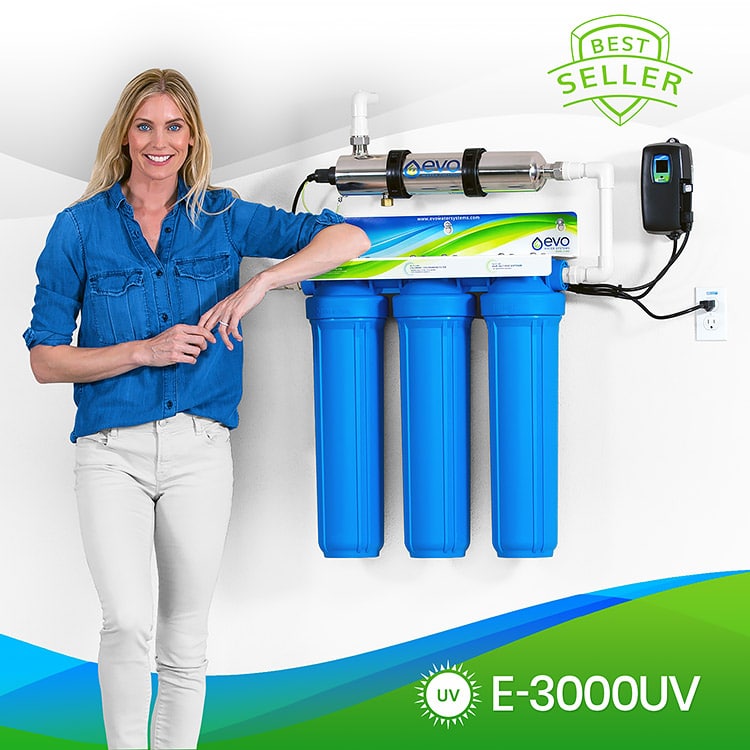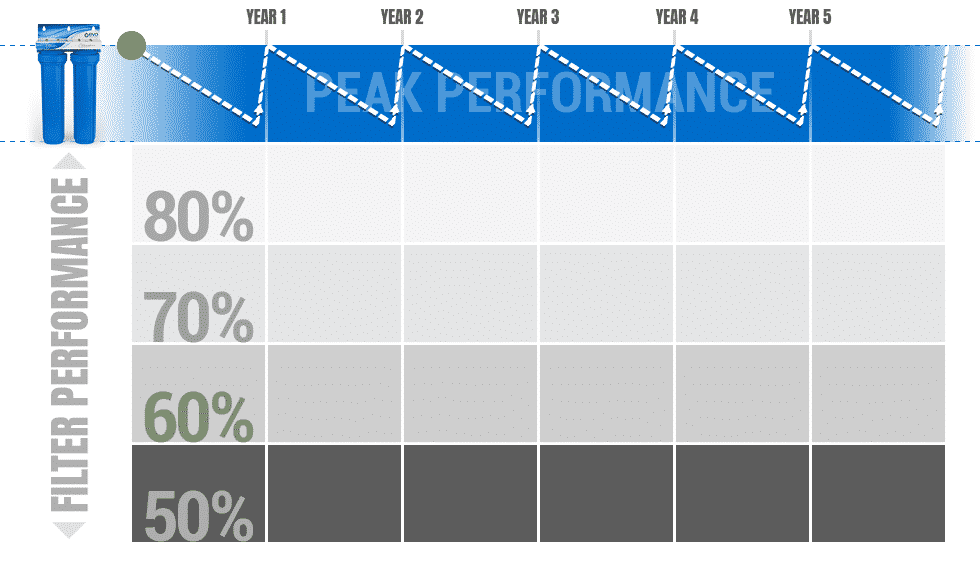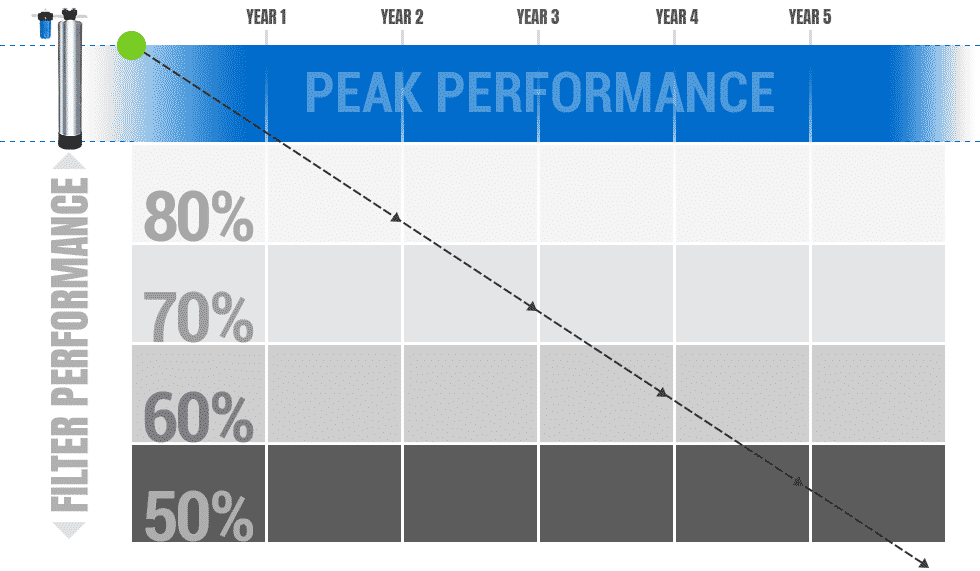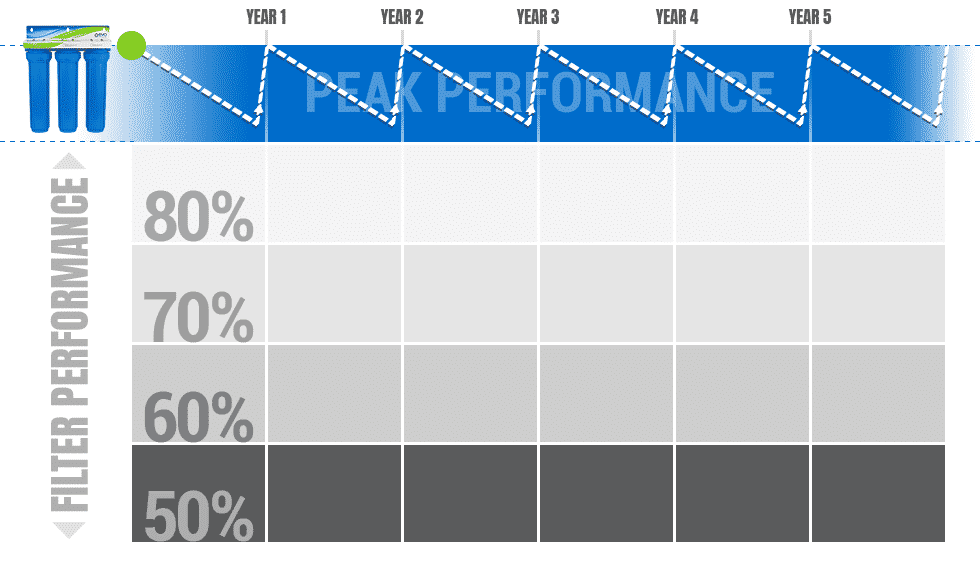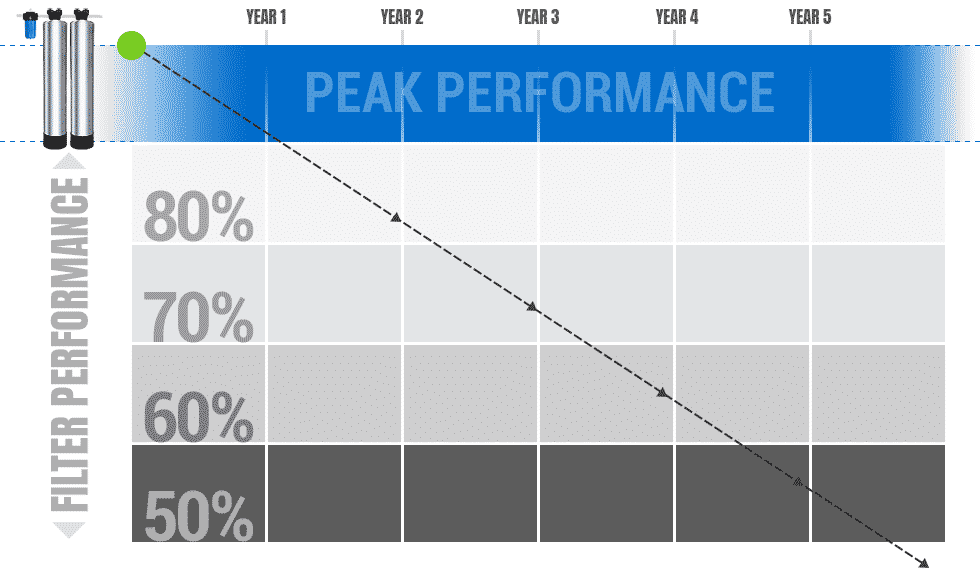What is a Whole House Water Filter?
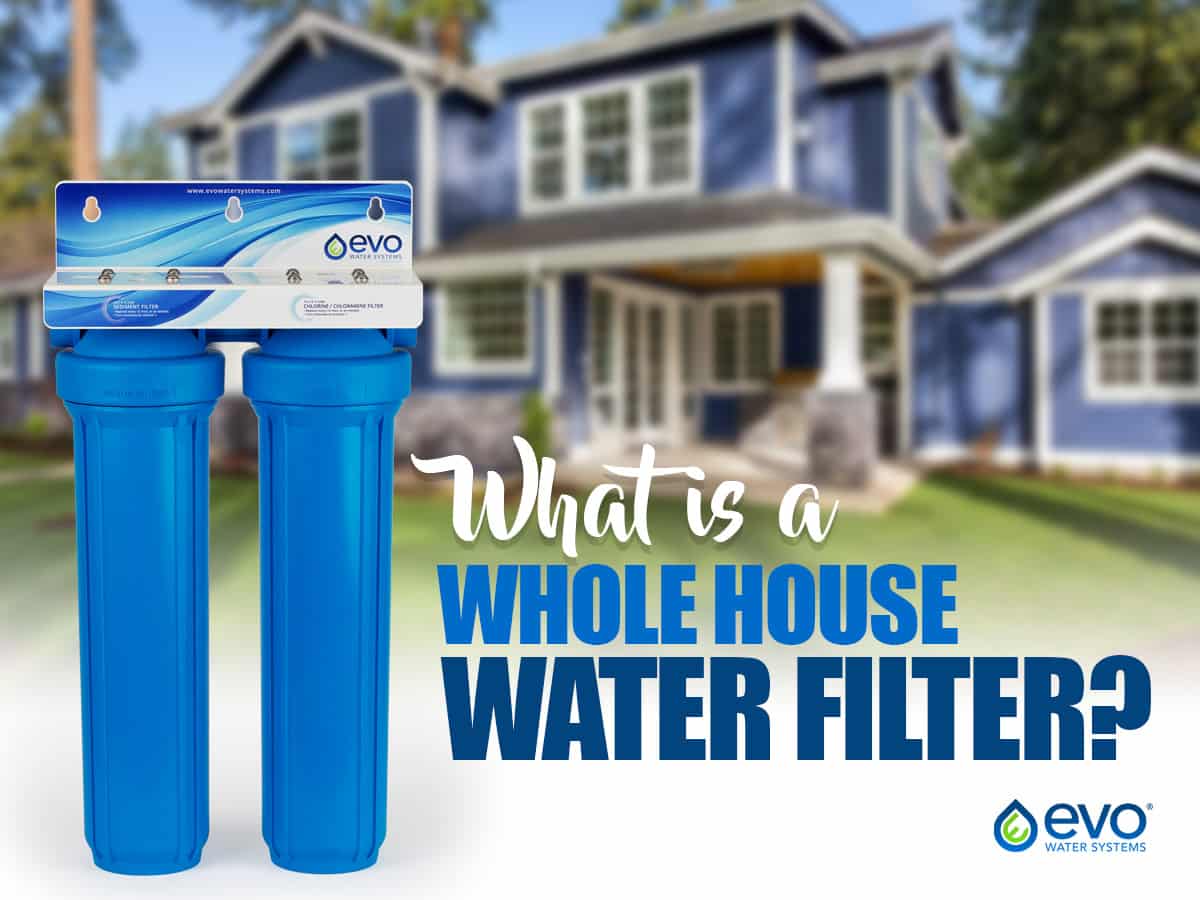
Protecting Water Quality with a Whole House Water Filter System
Even the faintest odor or taste of chlorine can make drinking water unappealing, but community water systems contain the chemical in a quantity that makes it more than discernable. The Centers for Disease Control’s research shows that public water systems use chlorine or less odorous chloramine as disinfectants. However, the distinctive taste and smell make homeowners want to reject it. Fortunately, technological advances in filtering produce a whole house filter that can provide an alternative to unacceptable water quality. A carbon-based whole house water filtration system can remove distasteful chemicals and harmful contaminants from a home’s water supply.
Considering the Water Source
The water that people use for drinking, cooking, basic hygiene, recreation, industry, and agriculture comes from either groundwater or the surface water found in lakes, rivers, streams, reservoirs, oceans, or gulfs. Distribution to communities and homes through a network of pipes can allow germs to contaminate it, furthering the need for disinfectants. However, the distinctive taste and odor of chlorine and chlorinate have repelled homeowners since the early 1900s. More than 100 years later, most community water systems use them to disinfect their water. Until recent technological advances provided access to a whole house water filter as an attractive option, homeowners had no available alternatives.
Avoiding Chlorine and Chloramine Effects on Health
Aside from the objectionable odors that disinfectants create in a home’s water supply, they produce downsides that affect health. A less odiferous version of chlorine, chloramine contains ammonia as well as the base chemical. In the bath, both can create adverse side effects. For example, skin can appear aged because they deplete the natural oils that provide essential nourishment. In addition, dryness, flaking, and itchiness can result from a bath that most people regard as a pleasurable experience devoid of danger.
In the heated environment of a shower or bath, the chemicals produce harmful vapors that can form acids when anyone inhales them. In addition, delicate tissue in nasal passages can receive negative impacts from the chemicals, a consideration that makes a water treatment system preferable and enjoyable. Similar outcomes can result from vapors that emit from hot tubs and dishwashers, potentially irritating the respiratory tract.
While not everyone may choose to look directly at the showerhead while enjoying a warm steamy bath, many find it an enjoyable experience. Shampoos in the shower tend to provide excess amounts of water to the head and face, and the concentration of chlorination can produce an effect that makes the eyes red and watery.
Preventing Changes to the Taste of Food
While the odor and taste of chlorinated water may seem abundantly apparent in the shower, they present equally unpleasing effects on food. While rinsing vegetables before cooking seems desirable, exposure to chlorinated water can deposit a residue that affects the taste. Dry staples that absorb the chemical never taste as good as rice or pasta that cooks in liquid from a water filtration system.
Examining the Need
A water treatment system can provide a stalwart defense against chemicals and disinfectants in municipal water. The capability of a whole house water filter system to transform the water supply from odorous and distasteful to enjoyable makes it essential for a health-conscious home. When installed where the main water supply enters a home, it provides filtered water to every tap, bathroom, dishwasher, water heater, and laundry room. A whole house filter system serves multiple functions that supply the demand for water with one filter that supplies any number of taps or appliances.
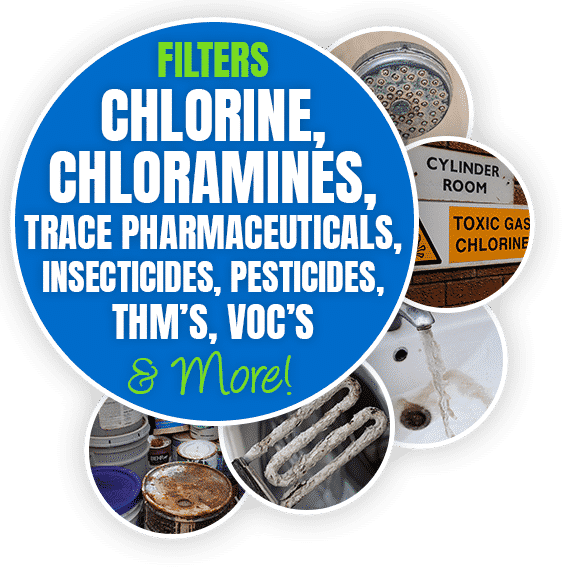
Choosing a Uniquely Effective Solution
A carbon-based whole house water filter removes objectionable elements from a home’s water supply. Whether the task requires removing pesticides, microorganisms, organic compounds, heavy metals, bad taste, foul odors, chlorine, or chloramine, a water filtration system can handle it. With an installation at the point where the water supply enters a home, it can remove contaminants with extraordinary efficiency. Evo Water Systems streamlines the process with the Evo E-1000 Whole House Filter.
5-Micron Sediment Filter
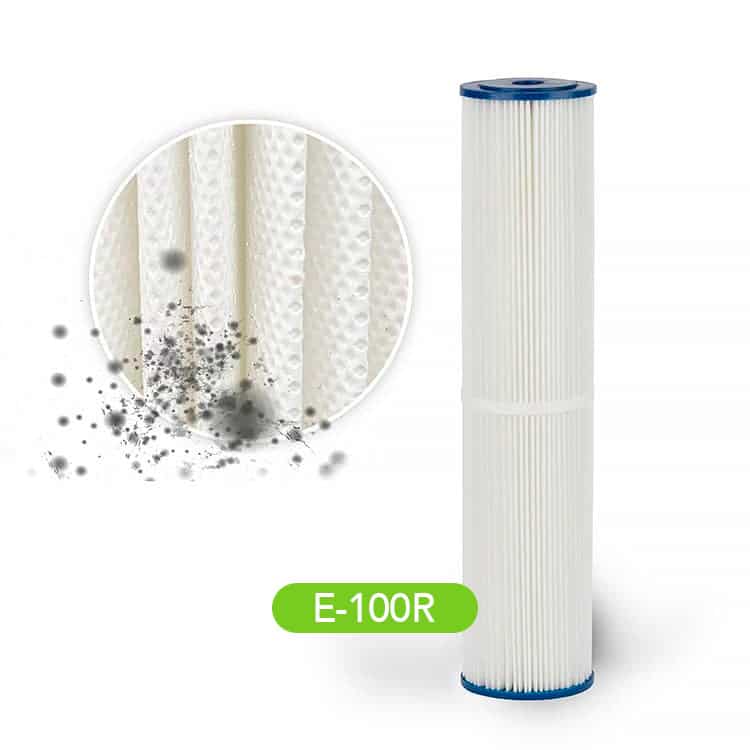
Coconut-Activated Carbon Filter
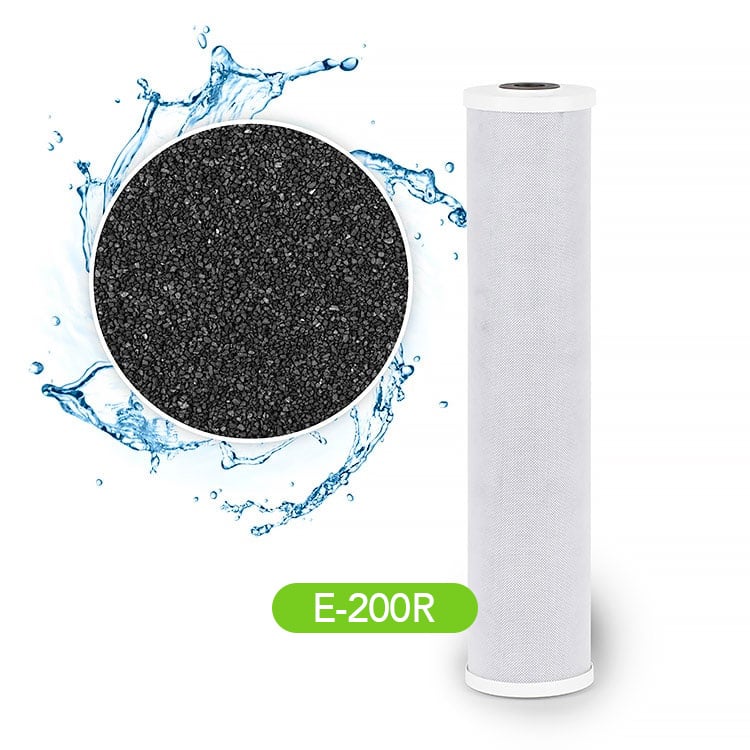
eSoft Salt-Free Softening Technology
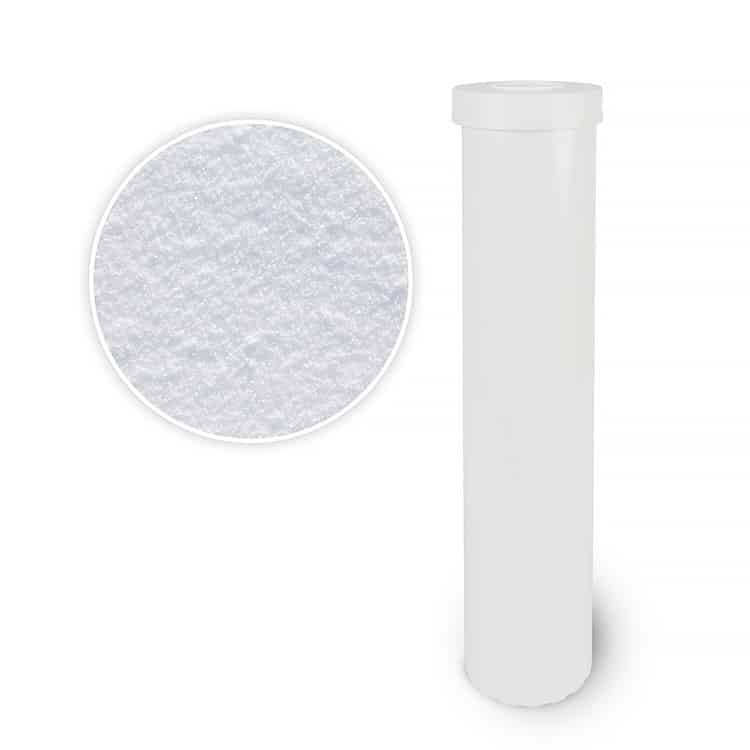
Choosing the Benefits of a Whole House Water Filter System
Better Tasting Water
No Harmful Contaminants
Cleaner, Better-tasting Food
The selection of food often depends on the anticipation of a favorite, familiar taste, or flavor, but the presence of chlorine or chloramine can produce disappointing changes. Whether the chlorinated water provides a rinse for fruit and vegetables or a liquid that ingredients absorb, none can taste the way people expect. Rice and pasta, dry beans, and potatoes readily assume the flavor of the liquid where they cook. Unfortunately, they carry the absorbed taste and smell to the dinner table, where they influence the enjoyment of a dish. An Evo water treatment system eliminates elements that negatively affect the taste of food.
Softer Skin and Healthier Hair
Does Not Require Electricity
Water pressure prevents the need for electricity as water flows through a water filtration system at the point of entry into a home. Taps in the laundry, baths, or kitchen cannot function without water pressure, and water cannot get to them without passing through an installed filter. The process works efficiently and seamlessly to remove contaminants from drinking, bathing, or laundry water without attracting any notice or needing attention. As long as water pressure pushes water through a home’s distribution system, the Evo water filtration system makes it safe and healthy to use.
Installation Inside or Out
Does Not Waste Water



